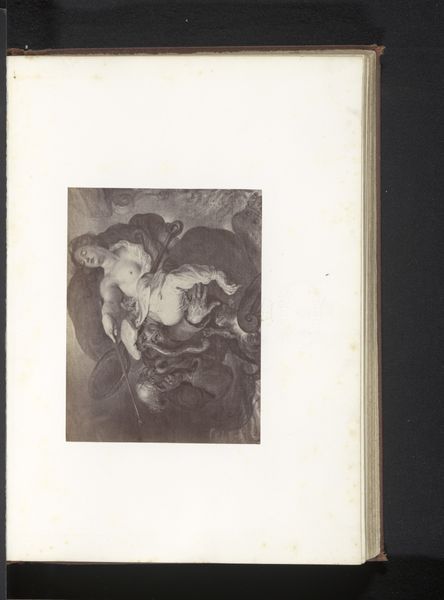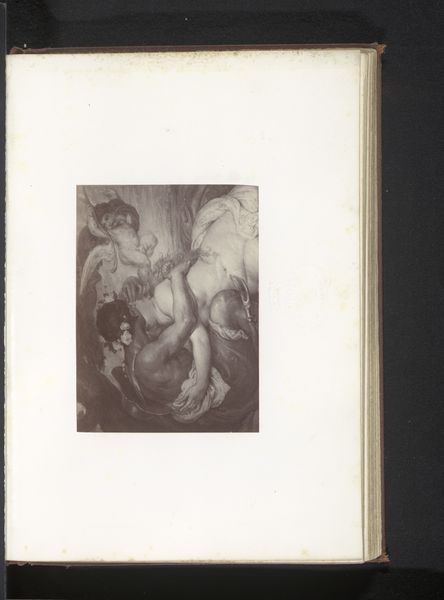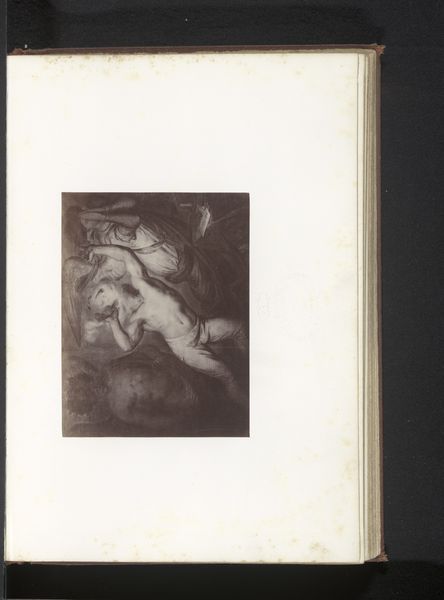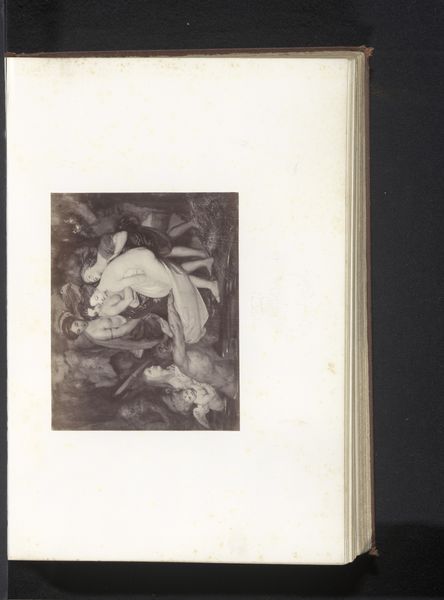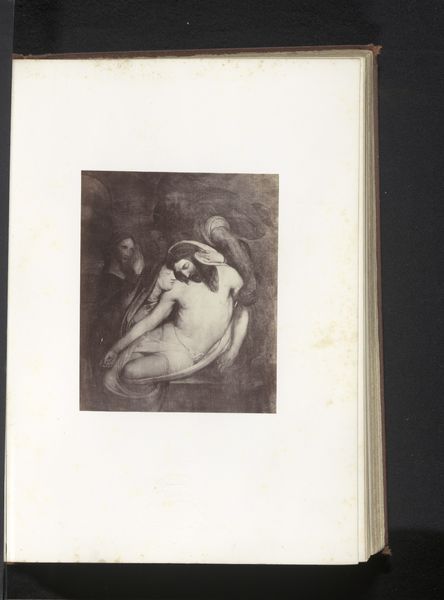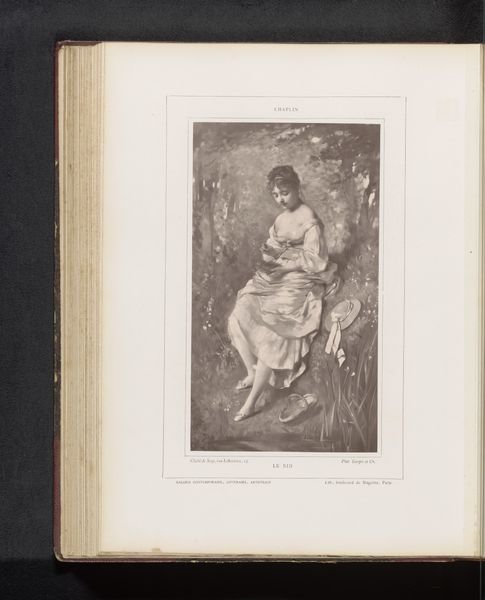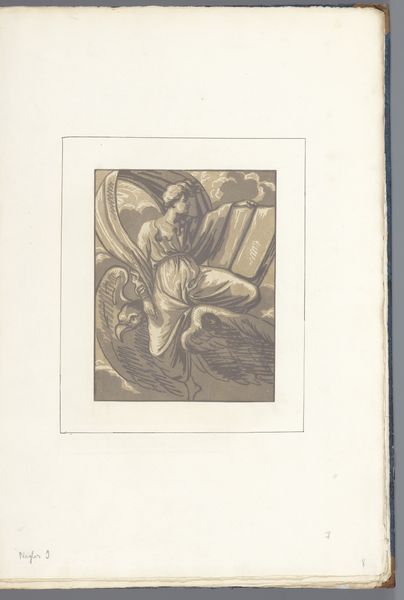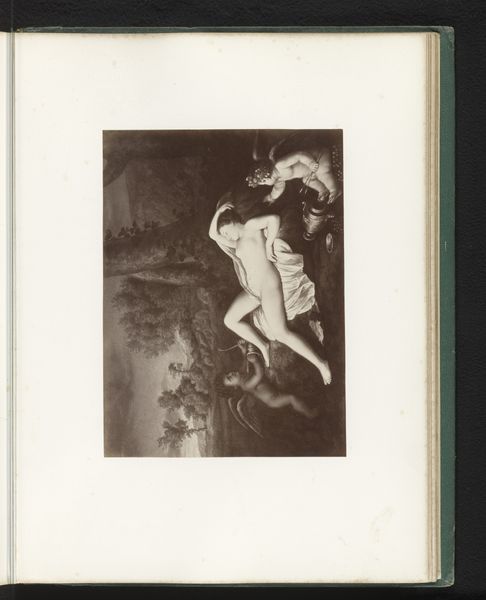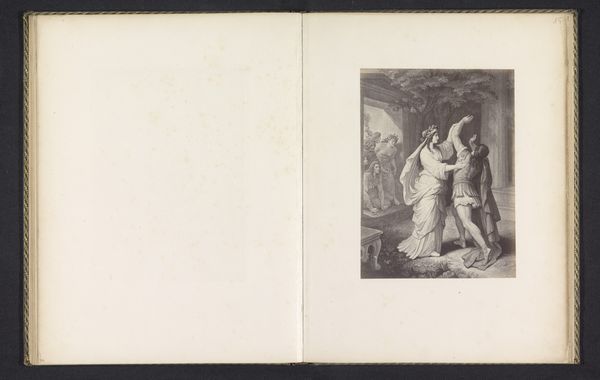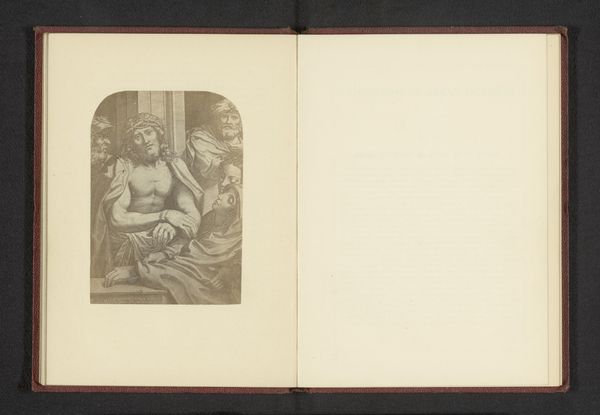
Dimensions: height 174 mm, width 85 mm
Copyright: Rijks Museum: Open Domain
Editor: Here we have "Fotoreproductie van De hoogmoed door Antoine Wiertz", a photographic reproduction of Wiertz's painting "Pride," made sometime before 1868. It’s a monochromatic albumen print showing a nude male figure, and I’m immediately struck by the theatricality of it all. What's your interpretation of this work? Curator: That's a keen observation about theatricality. I think understanding Wiertz’s “Pride” requires us to delve into the historical moment of its creation and reproduction. Considering its themes of nudity and potential arrogance, how do you see it fitting into the societal expectations of that time? It really asks us to think about how power, particularly male power, was constructed and perceived then. Editor: I see it now! It does have a sense of challenging social norms around masculinity, especially in its unabashed display of the male form. But isn't it just reinforcing those norms by portraying a powerful, albeit flawed, male figure? Curator: Exactly. It presents us with that inherent contradiction. Wiertz might be critiquing "Pride," but through a distinctly male, perhaps even patriarchal, lens. It's crucial to consider the social context—the limited perspectives available, the era’s own understanding of morality and power. Whose voices are amplified here, and whose are silenced or absent? How does that affect our understanding? Editor: So, the print itself isn't just an image but an artifact that reflects the power dynamics of its time. I’d never thought of it like that before. Curator: Precisely. Seeing it this way invites a richer dialogue between past and present. It makes us question what has changed, what remains the same, and how we can interpret such depictions through a contemporary lens.
Comments
No comments
Be the first to comment and join the conversation on the ultimate creative platform.
